
Aggressive Bulking: How to Build Muscle FAST
If you’re a skinny guy desperate to build muscle fast, I get it. I remember hungering not for food but for muscle. I was too eager to heed any of the many warnings. I gained weight as fast as I possibly could. And to my great surprise, it worked.
I gained 20 pounds in 3 months. Then I helped my skinny roommate bulk up even faster. He gained 30 pounds in 3 months. Since then, we’ve helped thousands of other skinny guys do the same. Under the right circumstances, aggressive bulking can work incredibly well.
Not everyone should bulk fast. The stars need to align just so. You need to be skinny and naturally lean. You also need to be ready to bulk properly—to follow a good workout program, eat a nutritious bulking diet, and live a lifestyle that supports muscle growth.
If that sounds like you, good. Let’s delve into the thick of it.

Introduction
Many experts caution against bulking too quickly, saying it will only make you fat. Their followers parrot them, giving the same timid advice, urging patience instead of passion.
They aren’t wrong. Not completely. But they’ve forgotten what it’s like to be thin, if they were ever even thin at all. They don’t remember how quickly guys like us can grow.
In our experience helping thousands of skinny guys bulk up, it seems our rate of muscle growth is tied to how much room is left on our frames. A muscular man has already filled his frame. There isn’t much more room for growth. He should bulk at a slower pace. But if you’re still skinny, your frame isn’t just empty; it’s eager. You can fill it quickly.
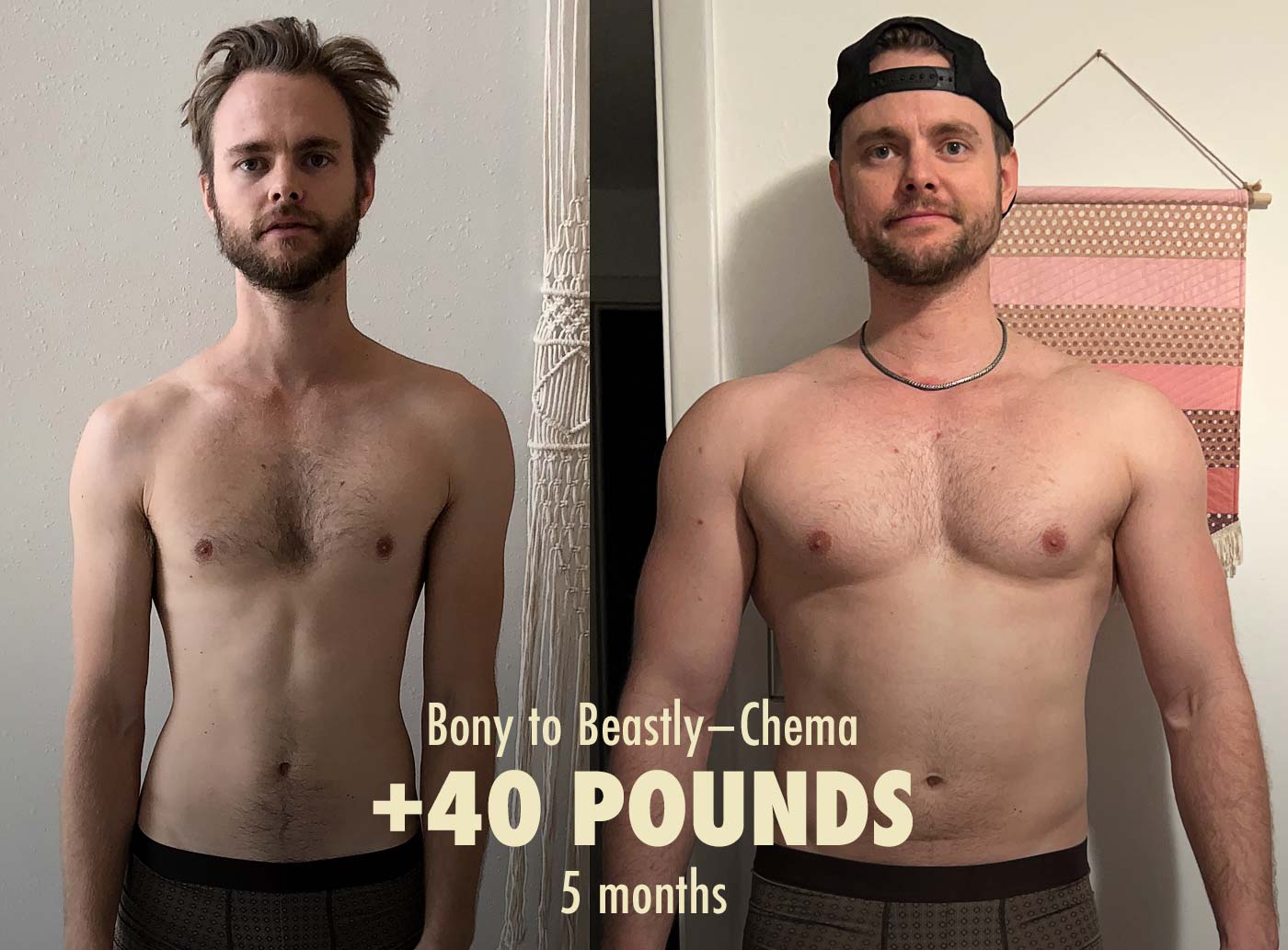
Ask any skinny guy who’s gained a significant amount of muscle. He’ll tell you how he bulked aggressively once, back when he was young and naive. He wouldn’t do it again, but he’s glad he did it then. It gave him his foundation of muscle and strength.
That’s true of me, Jared, Marco, Jeff Nippard, Eric Trexler, John Berardi, Sean Nalewanyj, Alex Leonidas, Alan Thrall, Omar Isuf, Geoffrey Verity Schofield, and almost every other prominent natural bulker you can think of. It’s almost like a rite of passage.
Did all of our bulks go smoothly? Not at all. That’s why we revel in sharing those old bulking stories. We’re excited to teach you how to avoid our mistakes. That way, you can come up with your own.
What’s Aggressive Bulking?
You’ve probably heard of dirty bulking and see-food diets, where you lift heavy, lounge around, and stuff yourself full of junk food. When you hear of someone who got too fat while bulking, that’s usually how they got there. They put too much emphasis on the calorie surplus, too little effort into everything else. That isn’t the way.
An aggressive bulk is a maximalist approach. It means putting in the work to do bulk correctly: following a proper workout program, eating an abundant diet full of nourishing foods, and living a lifestyle that supports health, recovery, and muscle growth. These factors feed into one another, allowing you to build muscle faster, justifying a larger calorie intake.

Even so, the faster you bulk, the higher your risk of gaining fat. When you eat more calories than you burn, that leaves a surplus of energy. That extra energy can be used to build muscle. But whatever isn’t used to build muscle will be stored as body fat. That’s why so many people shy away from aggressive bulking.
The Three Styles of Bulking
There are three ideal ways of bulking, all of them designed to make you bigger and stronger while avoiding excess fat gain. That’s what bulking is. Bulking is a focus on gaining lean mass. That’s what separates it from regular weight gain.
Each style of bulking has a different priority:
- A classic bulk tries to balance your rate of weight gain with your expected rate of muscle growth. But all you can do is estimate, and if you underestimate your ability to build muscle, you’ll leave gains on the table. If you overestimate, you’ll gain more fat. A classic bulk is an attempt to follow the middle road. For a skinny guy, that usually means gaining 0.5–1 pound every week.
- A Lean bulk errs on the side of eating fewer calories, reducing the risk of gaining a noticeable amount of fat. This works especially well for people who are already fat. They might resent that fat, but when it comes to building muscle, it’s an asset. That extra fat can be invested into muscle growth, reducing their need to get all the extra energy from food. Overweight guys don’t even need to bulk to build muscle.
- An Aggressive bulk errs on the side of maximizing muscle growth. To do that, you stack every odd in your favour, including eating a plentiful diet. It’s the fastest way to build muscle, especially for naturally skinny guys. However, it also carries the highest risk of gaining a noticeable amount of fat. We define an aggressive bulk as gaining at least 1 pound every week.
All three of these bulking styles can be ideal. They all lead to the same place, just at different speeds. Some people benefit more from tiptoeing cautiously forward, others from charging with a machete. It all depends on who you are and what you want. Let’s dive into that next.
What Happens When You Bulk Fast?
There’s a 4-week study that split seasoned lifters into two bulking groups (study). The first group gained 1 pound per week (a classic bulk). The second group gained 2 pounds per week (an aggressive bulk).

The classic bulkers gained muscle more leanly but more slowly. The aggressive bulkers gained twice as much “muscle” and significantly more fat (full analysis). Here’s the thing. These studies aren’t measuring muscle growth directly, they’re measuring gains in lean mass, which includes gut contents and glycogen. A bigger diet means more gut contents and glycogen. Thus, the study overstates the benefits of aggressive bulking.
On the other hand, most of these participants shouldn’t have been bulking so aggressively. Gaining 2 pounds per week is an extremely aggressive bulk, suitable only for the most desperate of skinny beginners. I’ve done it. Plenty of guys do it. It can work well. But it’s definitely not ideal for a random selection of seasoned lifters. And so, the study also exaggerates the downsides of aggressive bulking.
If you’re a skinny beginner, I wouldn’t read too much into this study. It wasn’t conducted on guys like you. If you bulk as well as they did, you can expect better results than they got.
Who Should Bulk Fast?
Only a small subset of people benefit from bulking aggressively. But you searched out this article. There’s a good chance you’re in that subset. Here’s how to know:
- Your frame needs to be eager for muscle growth. If you’re underweight, skinny, or thin, great. You still have plenty of room for muscle mass. You’ll probably be able to build muscle quite quickly.
- You need to be lean. If you already have a bountiful gut, you don’t need to stuff it even fuller. You already have all the extra energy you need. It’s just on the outside of your stomach instead of the inside.
- You need to be naturally lean. Aggressive bulking isn’t for people who just finished losing weight. It’s not a rebound diet. It’s for people who’ve always been thin. It’s for people who don’t tend to overeat.
- You need to be ready to train for muscle size. The whole purpose of an aggressive bulk is to maximize your rate of muscle growth. That means you need to start by stimulating a maximal amount of muscle growth. To do that, you have to follow a good workout program. You have to train for size. You have to train your legs. And your arms. Maybe even your neck.
- Your digestive system needs to be ready. You don’t need a big stomach or a huge appetite. If you had those things, you wouldn’t be skinny in the first place. But you have to be ready to eat more than you want to. That can be hard.
- You need to be psychologically robust. If you’re sick and tired of being sick and tired, I get it. You can use that frustration to stoke the fires of your passion. That’s what most of us skinny guys do. But if losing sight of a furtive lower ab will make you lose sight of your sense of self, aggressive bulking isn’t for you.
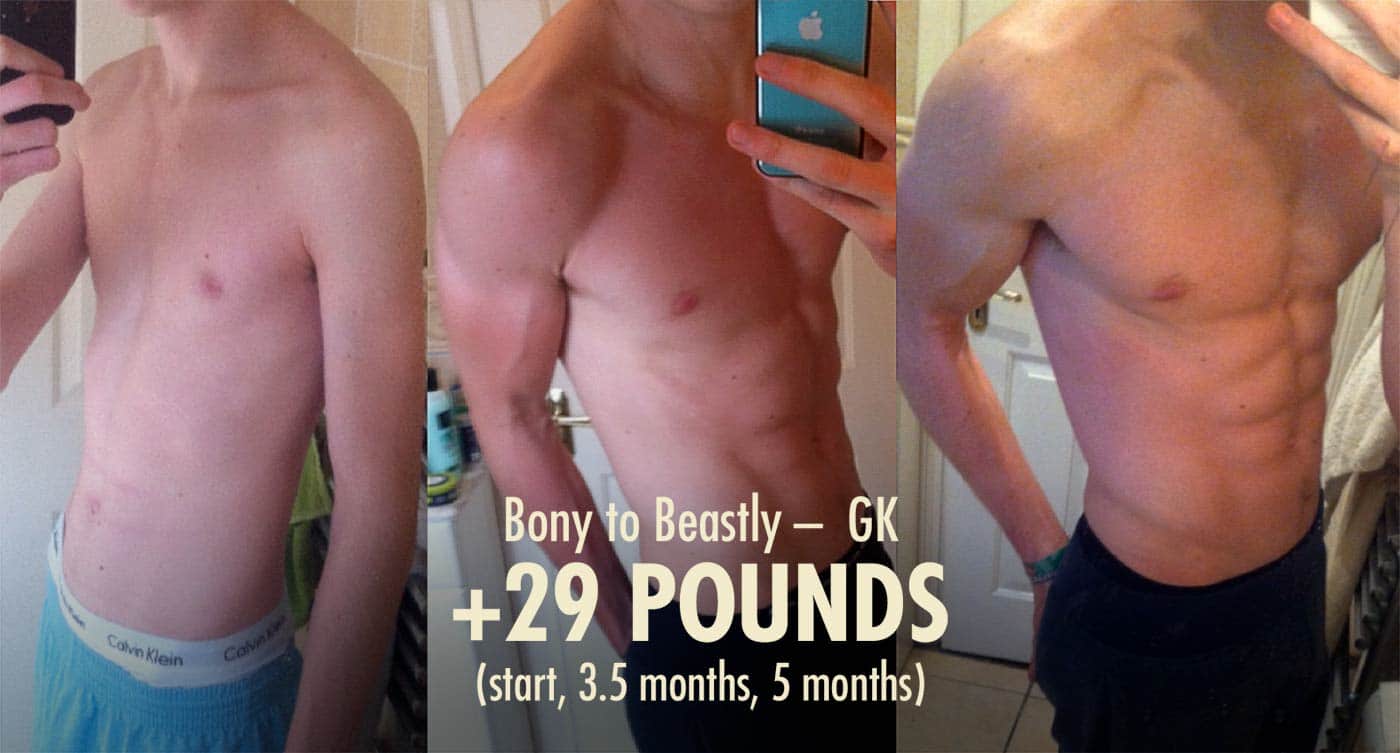
If you’re already looking over your shoulder, trembling in fear of the fat that follows, turn back. You don’t need to do this. Bulk at a slower pace. There’s nothing wrong with that. We’ll be there waiting for you when you arrive.
The Terror of Gaining Fat
What if you get fat? That’s a common fear, and I understand where it comes from. Leanness is our genetic gift, our defining feature, and our most loyal trait. But you have it backwards. You don’t fear fat; it fears you. Your whole life it’s fled before you. Now you’re chasing it, snapping at its heels, feeling the terror radiating from it. You’re mistaking that terror for your own.
Your leanness isn’t a fragile maiden begging for protection; it’s a sword yearning to be swung. If you gain too much fat, you’ll burn it off, as you’ve done before. Nobody is better at that than you. Your fat will cry out for mercy in the Hellish inferno of your metabolism.
And besides, if you gain some fat, you’ll have a greater energy reserve to draw upon. You’ll have more energy than your body feels it needs. When you stop bulking, your body can use that extra energy to continue building muscle.
You can’t let definition define you. Forget this idea of being lean and ripped. Replace that ideal with a bigger, stronger, more powerful one. You can reclaim your leanness later.
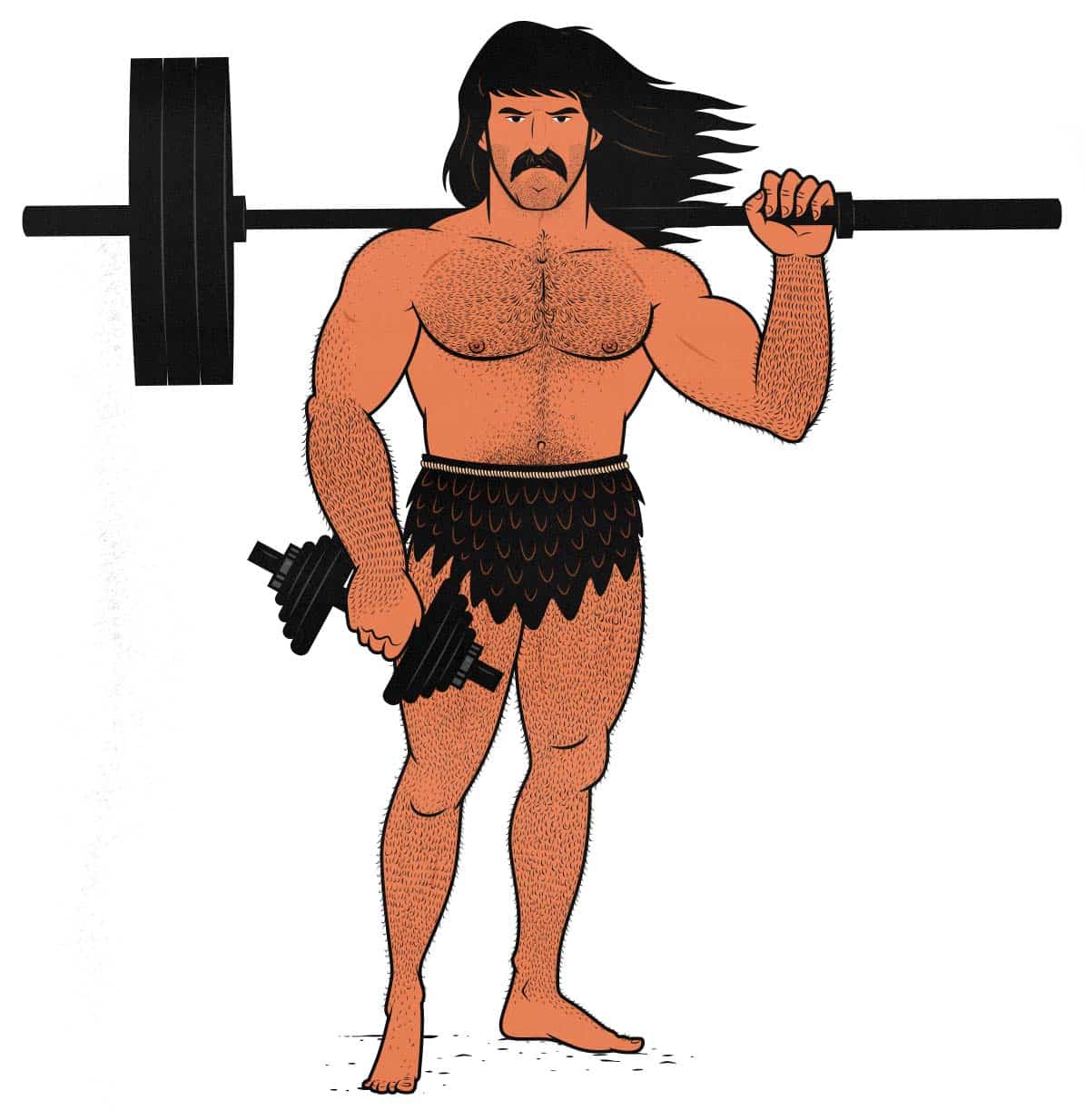
How to Bulk Aggressively
If you want to build muscle fast, start by stimulating a tremendous amount of muscle growth. That’s what justifies your larger calorie intake. That’s the heart of aggressive bulking. After that, with tired muscles and a full belly, you can rest, recover, and grow.
- Stimulate as much muscle growth as possible.
- Eat enough food to gain weight at an aggressive pace.
- Rest, recover, and be healthy.
None of these things are easy. Stimulating a ton of muscle growth can be fatiguing. Eating a large calorie surplus can feel oppressive. Eating a nourishing bulking diet can seem overwhelming. And living a healthy lifestyle can get complicated. Let’s dive deeper into all of it.
How to Stimulate More Muscle Growth
Most skinny guys underestimate how powerful resistance training can be. We don’t intuitively eat enough food to grow, so we assume the stimulus isn’t provoking much growth. It is. Resistance training will make your body hungry to build muscle. When you feed it, it will grow.
The more muscle growth you can stimulate, the more calories your muscles will consume. That means you’ll build muscle faster. It also leaves fewer calories to spill over into fat gain. That’s how you bulk both quickly and leanly.

Hypertrophy training is the most potent form of resistance training. It stimulates muscle growth far more efficiently than any other style of training. That’s what it’s optimized for. Here are the factors that define a good hypertrophy training program:
- Start with a foundation of compound lifts. You need at least one big compound lift for every major movement pattern. Usually, that means a squat, bench press (or push-up), Romanian deadlift, and pulldown (or chin-up). More variety is good. Feel free to include rows, overhead presses, rows, and whatever lifts suit you best. Start every workout with 2–4 of these lifts.
- Do isolation lifts for the muscles that need them. Usually, that means adding bicep curls, tricep extensions, shoulder raises, and some ab exercises. And if you’re especially ambitious, maybe some calf raises and neck curls/extensions. Finish each workout with 2–4 of these lifts.
- Train each muscle 2–3 times per week. Rest for 48–72 hours between each workout. That will keep your muscles growing steadily all week long.
- Lift in the hypertrophy rep range. 8–12 repetitions per set is a good default rep range, but you can dip as low as 4 or as high as 20.
- Rest almost enough between sets. 2–3 minutes is long enough to recover most of your strength between sets, depending on how big the exercise is and how fit you are. Keeping your rest times strict won’t speed up muscle growth, but it will speed up your workouts.
- Do enough sets for each muscle. That usually means doing around 4–8 sets per muscle per workout. For example, to get 4 sets for your quads, you could do 4 sets of goblet squats. To get 8 sets for your biceps, you could do 3 sets of pulldowns, 3 sets of rows, and 2 sets of biceps curls.
- Lift as deep as you can. Challenging your muscles at longer muscle lengths can stimulate 1.5–3x more muscle growth. It will also help you build longer, fuller, more balanced muscles.
- Lift close to failure. Stop 1–2 reps shy of failure on your compound lifts. Stop 0–1 reps shy of failure on your isolation lifts. Try going all the way to failure now and then, especially on your upper-back exercises and isolation lifts. It’s important to learn what failure feels like. That way, you know how to stop just shy of it.
- Strive for progressive overload. Every time you step into the gym, push yourself to lift more weight than last time. Eke out just one more repetition. It doesn’t need to be much, but it needs to be something.
If you’re still relatively thin, I recommend a 3-day full-body workout routine. You’d train all your major muscle groups, take a day or two of rest, and then train them all again. That isn’t the only way to maximize your rate of muscle growth, but it makes the best default, especially for novices and early intermediates. Carve your own path at your own peril.
How to Lift with Passion
The temptation will be to do MORE. More exercises. More sets. More workout days. That’s not the right way to approach it. Bulking is about building yourself up, not grinding yourself into dust with endless, lacklustre repetition.
Instead, lift with PASSION. Put your full spirit into every repetition, every set, and every workout. Make each of them count. Train with gusto and then go home, where you can eat big and sleep like a beast.
Don’t conflate passion with recklessness. Passion is an abundance of care, not a lack of it. Don’t jerk the weights around. Don’t lift more weight than you can control. Don’t grind through joint or tendon pain. Don’t lift past failure.
- Passion is the bodybuilder burning through a slow set with a light weight, fully focused on the mind-muscle connection, glorying in the struggle.
- Spirit is the powerlifter putting every ounce of his effort into lifting a massive weight with perfect, practiced technique, revelling in the exertion.
- Gusto is the guy with a broken leg doing Larsen presses and seal rows instead of wallowing in despair at home.
- Focus is the new lifter spending his rest periods thinking about the next set instead of mindlessly scrolling through social media.
You won’t be perfect. That’s especially true if you’re a beginner. And that’s okay. Perfection is an ideal. It can never be reached. All you can do is journey towards it. Give each rep your all. That’s all you can give. It will be more than enough.
How to Gain Weight Aggressively
The more calories you eat, the faster you’ll gain weight. The more weight you gain, the more energy you can invest into muscle growth. But your muscles cannot grow infinitely fast. At a certain point, unused calories will spill over into fat gain.
With a classic bulk, the conventional wisdom is to eat 200-500 extra calories per day, gaining about 0.5–1 pound per week. The thinking is that this has the best shot at fuelling muscle growth while keeping your gains lean. That’s pretty good advice for the average guy. But in our personal and professional experience, skinny beginners sometimes benefit from bulking a bit faster than that.
If you want to bulk aggressively, try eating 500–1,000 extra calories per day, gaining 1–2 pounds per week. If you gain less than a pound per week for two weeks in a row, add 200 calories. If you gain more than 2 pounds per week for two weeks in a row, remove 100 calories.
Looking at the results of our members who bulked aggressively, the sweet spot seems to be about 1–1.4 pounds per week, on average. Your rate of weight gain won’t quite be linear, though. You’ll probably gain 1.5–2 pounds during the first few weeks, then settle into a slower pace as you get deeper into your bulk. That’s good.

How to Eat an Overwhelming Amount of Food
Most men would welcome a big bulking diet with open arms and a wider mouth. But we aren’t those men. That’s why we’re so desperate to bulk up. And that’s why it will be hard.
We’ve helped thousands of skinny guys through their bulks. Eating enough calories is almost always the hardest part. It was definitely the hardest part for me. I’m guessing you’ll struggle with it, too. So let’s try to make it easier.
Here are some methods for eating more calories more comfortably:
- Plan ahead and cook in bulk. Cook up big pots of chili, stew, and lentil soup. Prepare trays full of homemade protein bars. Fill your fridge with lean cuts of meat, Greek yogurt, fruits, and vegetables. Pack your freezer full of frozen berries and salmon. Fill your pantry with trail mix, nuts, dark chocolate, and beef jerky.
- Eat often. Snacks can increase your calorie intake without leaving you feeling over-full. Nibble on nutritious foods like bananas, mangos, nuts, dried fruit, and dark chocolate. Mix some fruit into some cottage cheese.
- Don’t skip meals! Don’t fall behind on your calories. It can be hard to catch up, especially if you have a small stomach or a quirky digestive system.
- Drink your calories. Your thirst for thickness cannot be quenched with water, tea, or diet soda, so drink smoothies, protein shakes, milk, or milk alternatives.
- Add healthy fats to your meals. Melt cheese over your chili and add slices of avocados to your sandwiches. Sprinkle nuts and dark chocolate chips over your Greek yogurt and berries. Cook with healthy oils like avocado oil. Drizzle olive oil over your veggies.
- Starchy carbs are great for building muscle (study). Think of foods like potatoes, yams, legumes, and whole grains, such as brown rice and oats.
- Feast on fruits. Fruits are an incredible source of nutritious carbs, vitamins, minerals, phytonutrients, and fibre. Think of high-calorie tropical fruits like bananas, mangos, and papayas.
- Eat plenty of fibre. Fibre feeds the microbiome in your gut, and it regulates your blood sugar and blood lipids. It’s a crucial part of a healthy bulking diet (study). Think of leafy green vegetables, legumes, whole grains, and fruits like apples, pears, and berries.
- Add healthy condiments. Consider condiments like homemade mayonnaise, pico de gallo, nut butter, honey, chimichurri, and olive oil.
- Eat some probiotics. Foods like yogurt, kefir, and kimchi can improve gut health and strengthen your digestive system.
- If a meal feels too heavy, walk it off. Walking helps food move through your digestive system (study). It can also release digestive hormones, speeding up gastric emptying and preventing the buildup of gas and stool in your intestines. This can help you avoid bloating and constipation.
If you want more ideas, our bulking program comes with a recipe book full of convenient meals that make it easier to eat a nourishing bulking diet. You don’t need special bulking meals, though. Many traditional meals are already quite nutritious. Smoothies are popular for a reason. My favourite bulking meal is a fairly traditional chili recipe.
How to Live a Healthy Bulking Lifestyle
Bulking isn’t just about lifting hard and eating big. You should also eat a nourishing diet, be reasonably active, and get enough sleep. This will keep you feeling strong and healthy, allowing you to build muscle faster and more leanly.
- Eat nutritious whole foods. It’s okay to eat some junk food now and then, but try to get the vast majority of your calories from nutritious foods. Think of foods like lean meats, seafood, yogurt, whole grains, eggs, legumes, seeds, nuts, fruits, vegetables, and dark chocolate. Tea and coffee are healthy, too.
- Be active during the day. You don’t need to be active all day. It’s fine to work a desk job. But try to move around, go on walks, and engage in physical activity when you can. Getting your blood flowing will deliver nutrients to your growing muscles.
- Get 7–9 hours of good sleep every night. Try to go to bed at a similar time every night. Find a relaxing bedtime routine that eases you into a restful mood. Give yourself the opportunity to sleep for at least 8 hours. If you wake up feeling refreshed after 7, that’s fine.
- Don’t reduce stress, but do manage it. Lifting weights is tiring, eating a big diet is hard, succeeding at work can be challenging, and raising kids can be exhausting. I’m sure you have your own unique struggles, too. That’s okay. People managing higher stress levels tend to feel more satisfied, have a greater sense of purpose, and live longer. The catch is you need to manage your stress. Fortunately, being active, eating well, and getting enough sleep will help with that.
We have entire chapters on each of those bullet points in our Bony to Beastly Program. You’d be surprised how much your lifestyle can improve your bulking results. For example, one study found that a few simple sleep tips increased muscle growth by 30% while cutting fat gains down to almost nothing (study). Similarly, managing your stress might sound hard to quantify, but it can have a measurable impact on hormones that help with recovery and growth.
Most Supplements are Overrated
Most supplements won’t have much impact on your muscle growth, especially when you’re bulking aggressively. That’s because the sheer volume of your bulking diet will give you a massive influx of macronutrients, fibre, and micronutrients. That’s even more true if your diet is nutritious.
You won’t need protein supplements when your plate’s piled high with meat, seafood, yogurt, legumes, nuts, seeds, and whole grains. You won’t need nitric oxide boosters when your diet’s rich in foods that naturally boost your nitrate levels, such as leafy greans, beets, carrots, nuts, seeds, and garlic. By the time you finish bulking, you’ll be a 200-pound multivitamin.
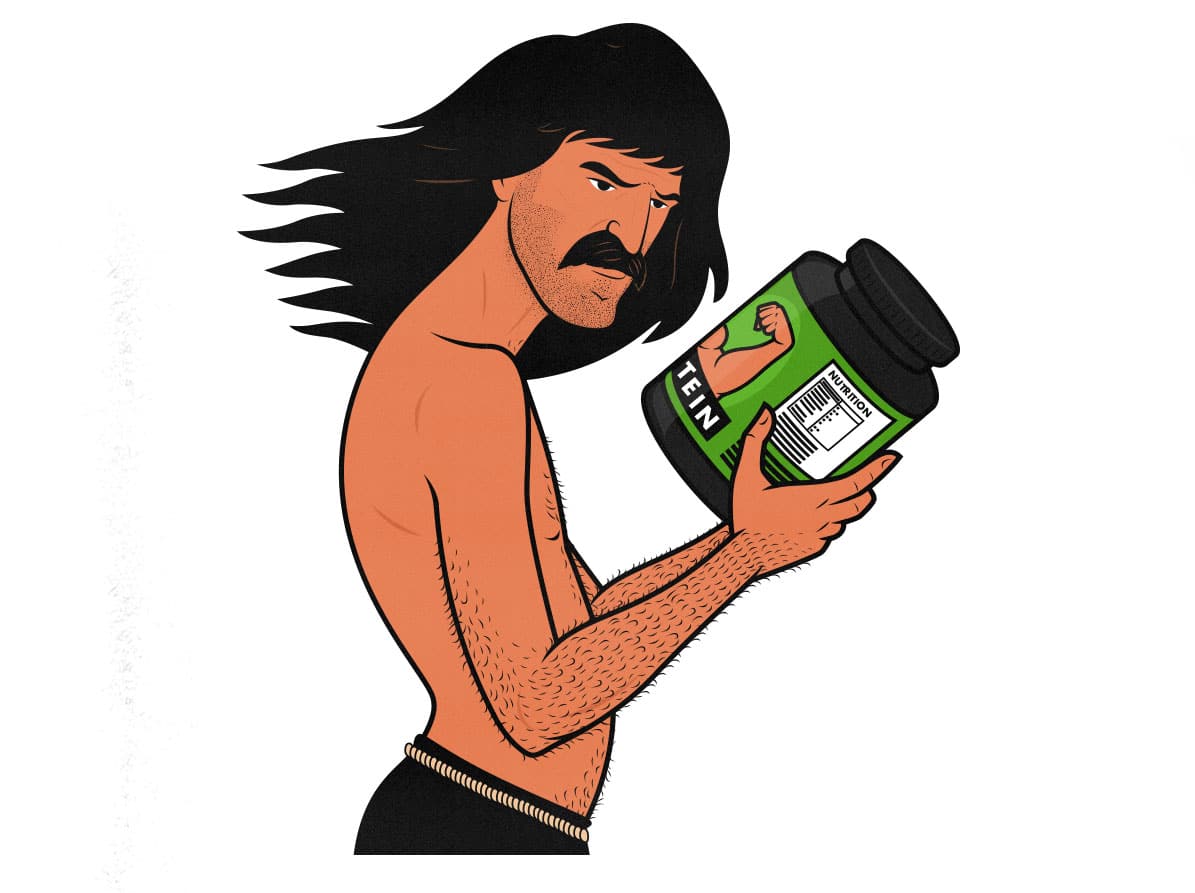
The one supplement that rises above the rest is creatine (study). Creatine can slightly improve your workout performance and marginally increase your rate of muscle growth. It pairs fantastically well with aggressive bulking. It’s quite healthy, too. You’d take 3–5 grams mixed into a large glass of water first thing every morning.
You can take other supplements if you want. If you’re low on protein, you can supplement with a protein powder. If you need energy, you can have some coffee before training. That’s all fine. You can read more about muscle-building supplements here.
Mass gainers are rich in protein and carbs but low in everything else. Aggressive bulking is about doing everything as beautifully as you possibly can. Better to blend up smoothies instead. They’re far more nutritious.
How Much Weight Should You Gain?
Many skinny guys benefit from gaining 1–2 pounds per week during their first 3 months of bulking. It’s rare to sustain that pace without beginning to accumulate a noticeable amount of body fat. So, if you want to play it safe, slow down after those first 3 months. When you slow down, aim for 0.5–1 pound per week.
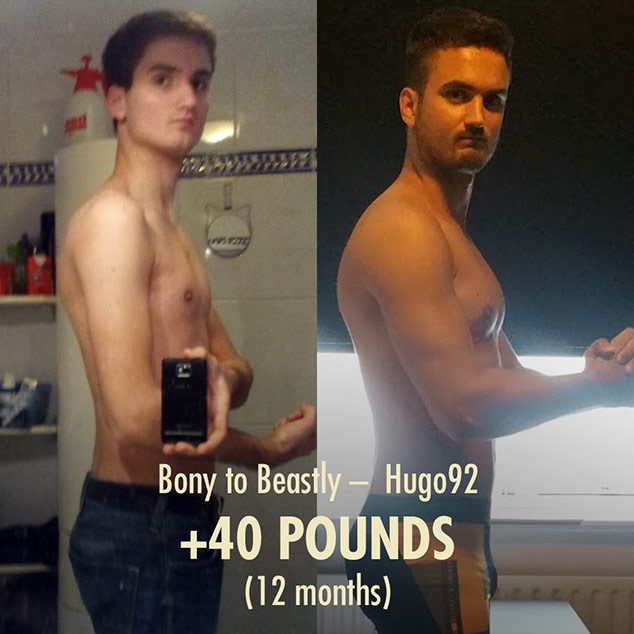
Think about gaining 20 pounds in 3 months, 30 in 6 months, or even 40 in your first year. You can take a break after every milestone. You can stop bulking whenever you want. I’m not trying to imply you ought to keep getting bigger forever. The goal is to become big, strong, and healthy, not perpetually unsatisfied.
In my case, I gained 55 pounds in a little over 2 years. I started with 20 pounds in 3 months. Then I casually maintained those gains for 8 months. Then I embarked on another 20-pound bulk and took another break. Then I bulked once more, gaining another 15 pounds.
When Should You Slow Down?
Let your rate of progress guide you. Track how much weight you’re lifting each workout, how much weight you’re gaining each week, and how your measurements are changing each month. Take progress photos every 4–5 weeks. (In our member community, we review those progress updates together.)
If you’re progressively overloading your lifts, you’re getting stronger. That’s fantastic. Keep going. Gaining strength is one of the most important parts of building muscle.
If you’re gaining at least a little bit of weight every week, you’re getting bigger. You’re eating enough food to support muscle growth. You’re hacking your way through a jungle most skinny guys never penetrate.
If the sleeves of your shirt are fitting tighter, they’re no longer supporting your goals. I’m so sorry, but it will be best to cut them off.
Here are some signs you might want to slow your bulk down:
- If your waist circumference is growing faster than your shoulder circumference. At first, your gut will expand because you’re filling it with extra food. After that, your waist circumference can be a good way to measure how much fat you’re storing. We can compare that to your shoulder circumference, which is a good indication of how much muscle you’re building.
- If your waist circumference passes 36 inches. Most health organizations warn against letting your waist circumference swell past 40 inches (study). That’s when people can start running into health problems. We recommend playing it a bit safer than that, keeping your waist under 37 inches.
- If you can’t tell whether you’re gaining muscle or fat. If you look at your measurements or progress photos and feel confused about whether you’re gaining muscle or fat, it’s probably time to slow down. That extra fat is a reserve of energy you can dip into as you build muscle more slowly.
You can slow things down at any time for any reason. If you’re sick of eating so much food, you’re worried about gaining fat, or you’re not as desperate to build muscle anymore, slow things down. The only reason to bulk this fast is that you want to. If you don’t want to, you don’t have to.
Amor Auctus
Amor Auctus, or “love of growth,” is the philosophy that we should embrace our fate and live up to our potential. Our skinny genetics aren’t imprisoning us; they’re taunting us, challenging us to exert ourselves fully, embrace the discomfort of fullness, and fill our frames to the fullest.

Alright, that’s it for now. If you want more muscle-building information, we have a free bulking newsletter for skinny guys. If you want a full foundational bulking program, including a 5-month full-body workout routine, diet guide, recipe book, and online coaching, check out our Bony to Beastly Bulking Program. Or, if you want a customizable intermediate bulking program, check out our Outlift Program.

